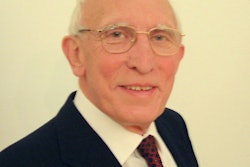Dear CT Insider,
The 1970s must have been a fascinating time to work in CT. Dr. Ian Isherwood, who died last week, was closely involved in the clinical implementation of the emerging modality and his career provides a great window into the early days.
Isherwood was so impressed with Godfrey Hounsfield's prototype that he ensured the world's first commercial CT head scanner was installed in Manchester, U.K., in 1972. The first commercial whole-body scanner in Europe was also installed in his department in 1975. To read about Isherwood's remarkable life, click here.
Given the rapid growth of CT in recent years, expenditure on outsourcing has risen sharply across much of Europe to cope with the increased demand. This problem is particularly acute in the U.K. and Dr. Nicola Strickland, president of the Royal College of Radiologists, believes the situation is unsustainable. Find out more here.
Meanwhile, a leading French group has evaluated a machine-learning algorithm that could predict immunotherapy response after analyzing CT studies for a radiomic signature defined by the level of a tumor's lymphocyte infiltration. Their results are worth a close look. You can do so by clicking here.
Treatment planning for particle therapy is currently performed using CT images of the patient, with CT Hounsfield units converted into relative stopping power, but this conversion process leads to uncertainties and errors. A better option may be to use protons or other ion beams to create patient images for particle therapy planning. Click here for the full story.
Packets filled with illicit drugs are sometimes detected incidentally, so it's vital to be familiar with where drug mules or body packers tend to hide them and how the packets appear on CT and x-ray. That's the timely advice of radiologists in Luton, U.K., who've shared their experiences and clinical images. To learn more, click here.
This letter highlights just a few of the many articles posted in the CT Community. For the entire list, please check out the lineup below.



















